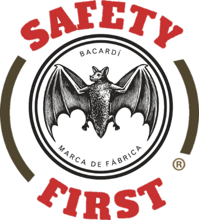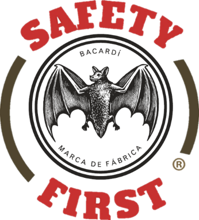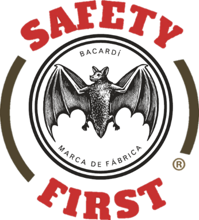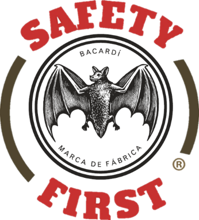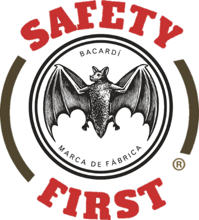Title Page
-
Conducted on
-
Prepared by
-
Signature
-
Location
-
Area
SQS Area Inspection Checklist
Facilities/Housekeeping
-
Hallways and transit areas are free of obstacles and unnecessary items, (i.e pallets, buckets, hoses, old equipment (anything that could cause an accident)).
-
Wet or waxed floor provided with warning sign.
-
Ladders are in good physical condition (i.e, there is no corrosion).
-
Railings are provided on the opposite side of the stairs where required.
-
Ladders free of obstruction.
-
Outside stairs have grating.
-
Ladder steps are found without oil or grease stains.
-
If there are stairs or other defective equipment (without shoes covers, without rungs and / or modifications), they are identified with DANGER or OUT OF USE signs.
-
Exterior trash cans with lids on and not overfilled
-
Areas protected with UV lights and mouse traps and are in good condition
-
The walls, ceilings and floors are in good condition: no holes, cracks or unevenness that accumulate possible contamination
-
There are adequate drains to prevent water from accumulating and they are clean (free of glass accumulation, dirty, etc.).
Electrical Safety
-
The cables and electrical equipment have their complete isolation and do not have joints
-
Electrical connections comply with the electrical classification of the area
-
Receptacles are in good condition
-
Portable electrical equipment is grounded
-
The electrical panels are identified, covered, secured and free of obstruction
-
The lighting of the area is adequate and there are no lamps damaged
Work Area: Safety/GMP/5S
-
There is free and safe space for the handling and movement of equipment in the work area
-
Work area has ONLY the necessary (materials and equipment) to perform the task (s). Work tables are clear and free of oil (i.e, no cell phones, personal items, etc.)
-
All locations of materials, equipment, work instruments, cabinets, drawers, rooms, areas, pipes, confined spaces, etc. are properly identified
-
The required equipment (reagents, cleaning equipment, sanitizers, materials) are organized: in the demarcated area (designated area)
-
Floor demarcations are in good condition and identified
-
The equipment, walls, ceilings, surroundings, pipes, etc. are clean
-
Shelves, cabinets, racks, etc. taller than 4 "are anchored to the wall or floor
-
Materials are stored in such a way that they are stable and safe (chemical classification, separate cleaning products); Heavy material is stored close to the floor.
-
Hydraulic and / or pneumatic hoses of the equipment are in good condition.
-
Flammable products are stored only inside cabinets approved for such use or areas designed for this purpose.
-
The extractors are working properly.
-
The chairs are adequate and in good condition.
-
The equipment (when applicable) is calibrated and has its calibration stamp updated.
-
The Fume Hoods operate at an adequate speed and have the annual inspection up to date.
-
The Fume Hoods were observed clean and organized.
-
The Fume Hoods have demarcated to where the window can be opened to maintain maximum suction.
Waste Management
-
Hazardous waste are located in a properly identified satellite area.
-
Limits of quantity and time of storage of dangerous waste in satellite areas are in compliance.
-
Spill kits are available in the area.
-
Recyclable materials are been accumulating properly for recovery.
Spill Prevention
-
The containers of dangerous material or oil are properly closed, labeled and have secondary containment
-
There are no leaks of any equipment / components (e.g. tanks, pipes, pumps, etc.).
-
There is no visible contamination or obstruction in drainage ditches or storm trenches (oils, chemicals, garbage, debris, etc.).
-
Measures are being taken to protect the pluvial systems from pollution coming from nearby works (washing, painting, solvent).
-
The spill kit have evidence are sealed. (i.e. zip tie or tamper seal). If spill kit has been opened, verify missing contents and report to EHS.
Hazardous Communication
-
Area personnel knows where to find the SDS.
-
The area is labeled with the necessary personal protective equipment.
-
Areas, utilities stations and containers are properly labeled.
-
The Certificate of Analysis (COA) of the chemical materials is visible (If applicable).
-
Materials identified with their traceability code, product, expiration date, status (approved, conforming, non-conforming, COA attached)
-
Non-conforming product is identified.
-
Staff taking sample makes the entry in LIMS and identifies it appropriately (# lot or LIMS code, date, product, signature). Ask the operator and verify a sample (note the aliquot number)
-
There is enough free and safe space for handling materials.
-
The stored materials are segregated and the dangerous ones are categorized.
-
Flammable material is stored in cabinets designed for this use. There is no more than 60 gal Class I / II or 120 gal Class III in the same cabinet.
-
The cylinders of compressed gases are identified, secured in their bases or tied to shelves or walls.
-
Non-connected gas cylinders have the safety cap cover installed.
Personal Protection Equipment
-
The employees are using personal protective equipment correctly.
-
Visitors wear appropriate protective clothing as required by the area (closed shoes, glasses, ear plugs, etc.).
-
No use of jewelry in manufacturing areas.
-
Personnel eating chewing gum or food in non-designated areas.
-
Designated areas for smoking, eating and resting existing and identified.
-
Eye wash station and safety showers are kept clear of obstruction and are inspected.
Fire Protection
-
Fire or emergency pull station triggers are unobstructed and at reach.
-
Fire extinguishers are inspected and recharged
-
The extinguisher areas are demarcated and free of obstacles
-
Personnel list for evacuation is updated and available
-
Evacuation diagram is visible in the areas.
-
The materials are stored at a minimum distance of 18 inches from the ceiling so as not to affect the operation of fire sprinklers
Emergency Exits
-
Emergency exits are properly identified; signs visible and in good condition
-
Emergency exits are free of obstruction
Good Documentation Practices
-
Over-writings duly corrected with signature and date. (Document what records and / or forms were verified)
-
Comments made have signature and date
-
Spaces and / or blank sections duly canceled with a crossed line, signature and date
-
Documents duly completed (no missing data: Ex: temp., Pressure, signatures, dates, etc.)
Document Control
-
Controlled documents have the red stamp that identifies it as: "Controlled Document".
-
Verify if the form, checklist, etc used is the current one in One QEHS
-
The records are identified and in good condition
-
Records and documentation completed duly filed
